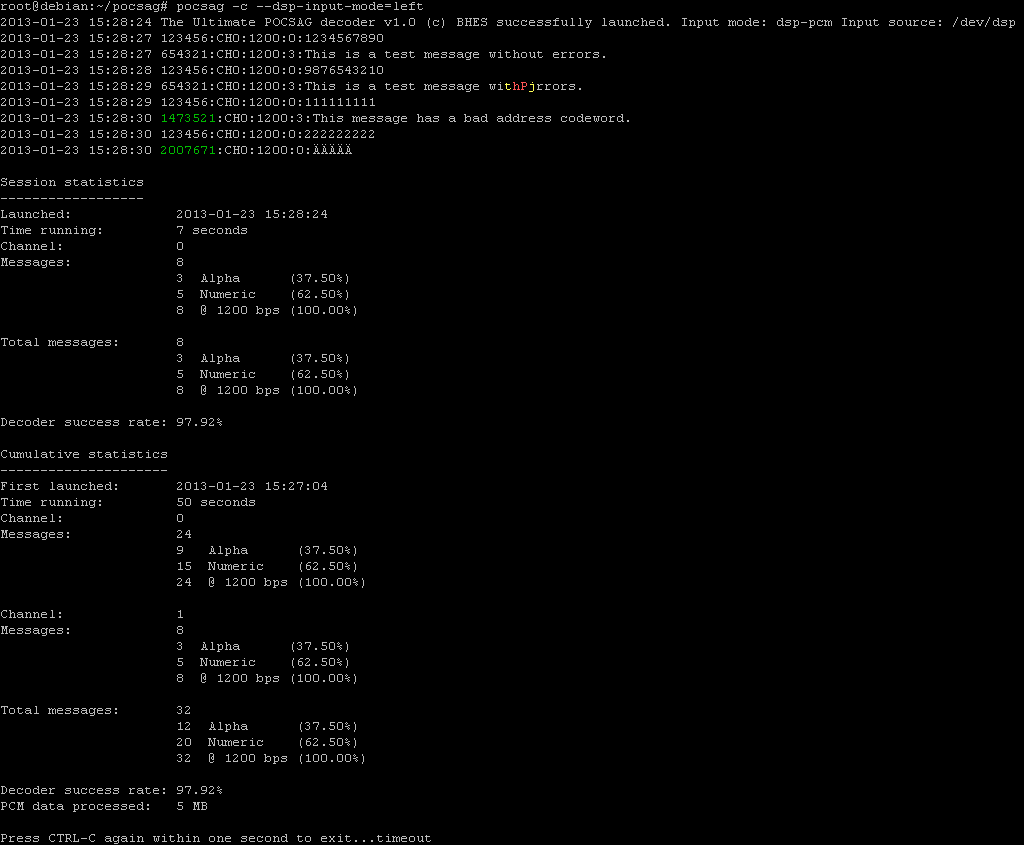
There is no POCSAG specified restriction on message length, but particular pagers of course have a fixed number of characters in their display.Īlphanumeric messages are encoded in 7-bit ASCII characters packed into the 20 bit data area of a message codeword (bits 30-11).
#Pocsag decoder software for windows code
Any unused codewords are filled with the idle value of 0x7A89C197.Īlthough the address (also referred to as a RIC - Radio Identity Code or CAP code - Channel Access Protocol code ) is transmitted as 18 bits the actual address is 21-bits long: the remaining three bits are derived from which of the 8 pairs of codewords in the batch the address is sent in.

Each data codeword carries 20 bits of data (bits 30 through to 11).Ĭodewords are transmitted in batches that consist of a sync codeword, defined in the standard as 0x7CD215D8, followed by 16 payload codewords that are either address or data. An address codeword contains 18 bits of address (bit 30 through to 13), and 2 function bits (12 & 11). The codewords are either address or data, which is indicated by the first bit transmitted, bit 31. The generating polynomial g( x) for the BCH (31, 21) code is: g ( x ) = x 10 + x 9 + x 8 + x 6 + x 5 + x 3 + 1 = ( x 5 + x 2 + 1 ) ( x 5 + x 4 + x 3 + x 2 + 1 ) Consequently, the code can detect and correct up to 2 errors in a codeword.

The error-correcting code has a 6-bit Hamming distance: each 31-bit codeword differs from every other codeword in at least 6 bits. Bits 31 through 1 are a binary BCH code (31, 21). Each codeword carries 21 bits of information (bits 31 through 11), 10 bits of error-correcting code (bits 10 through 1), and an even parity bit (bit 0). Transmission uses 32-bit blocks called codewords. Often single transmission channels contain blocks of data at more than one of the rates. Federal Communications Commission (FCC) has mandated this transition be completed prior to 2013. Some jurisdictions require that all systems move to a "narrowband" configuration, using 12.5 kHz channels and ☒.5 kHz frequency shifts (for example, the U.S.

The ±4.5 kHz frequency shift is used along with a 25 kHz channel spacing, known as "wideband". The high frequency represents a 0 and the low frequency a 1. The modulation used is FSK with a ±4.5 kHz shift on the carrier. The meetings were chaired by R.H.Tridgell and were attended by representatives of British, European, and Japanese pager manufacturers How it works These meetings were successful and in February 1981 the CCIR (Comité consultatif international pour la radio) the forerunner of the ITU-R accepted the code as Radiopaging Code No.1 (RPC No.1),(Rec, 584) In 1976 an international group of engineers began to meet to explore the possibility of developing a new code for wide area paging paging networks covering regions of entire countries.


 0 kommentar(er)
0 kommentar(er)
